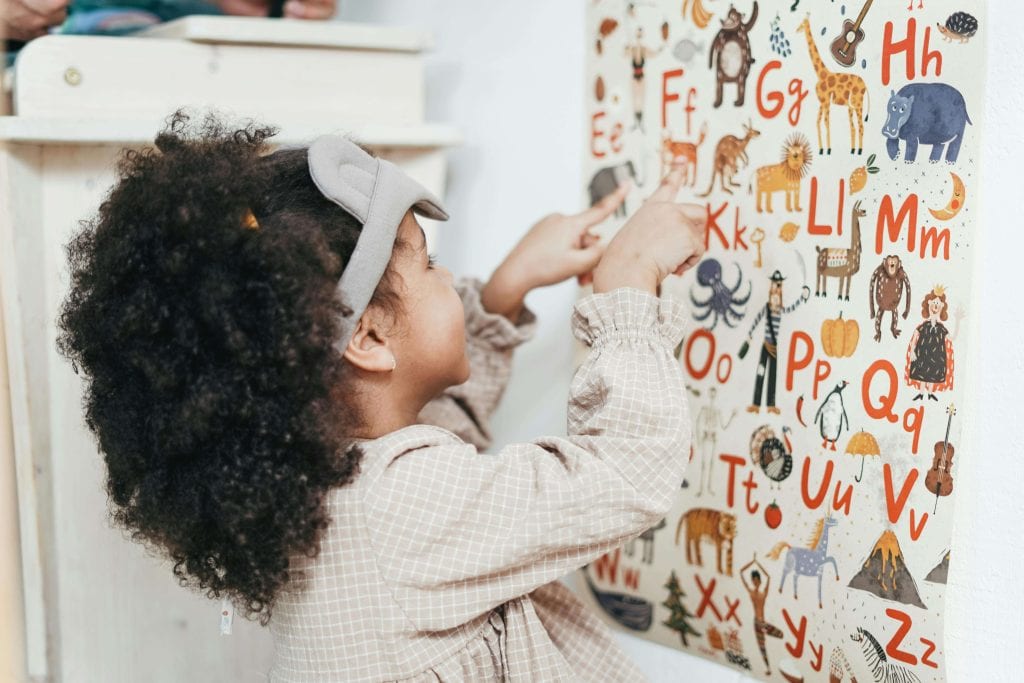3 Year Old Speech Delay Not Autism: What’s Really Going On?
If you’ve been Googling “3 year old speech delay not autism,” you’re probably wondering whether your child’s late talking is just a delay or something more. Maybe your pediatrician said to wait it out, but your gut is still unsure. Or maybe you’ve heard autism mentioned and aren’t sure what signs to look for (or not look for).
As a school psychologist, I’ve supported hundreds of families through this exact moment. I’ve conducted autism evaluations, explained results in plain language, and helped parents understand when a speech delay is part of a bigger picture—or when it isn’t. In fact, school psychologists often have more specialized training in autism and development than pediatricians do.

This post will walk you through what a typical speech delay looks like at age 3, how it differs from autism-related speech delays, and what to pay attention to beyond just talking.
What is a Speech Delay?
When your 3-year-old isn’t talking as much as other kids their age, it’s natural to worry. But not every speech delay points to autism. Understanding the difference can help you feel more grounded as you figure out the next steps.
A speech delay simply means your child is taking longer to develop spoken language than what’s typical for their age. At 3, most children are using short sentences, asking questions, and naming familiar people and objects. If your child isn’t doing these things yet, it doesn’t automatically mean something is seriously wrong—but it is worth paying attention to.
There are many reasons a child might be behind in speech:
- Late bloomer: Some kids just take a little longer to get going and then catch up without any intervention.
- Hearing issues: If a child has frequent ear infections or undiagnosed hearing loss, they may miss out on the sounds they need to learn how to talk.
- Bilingual exposure: Kids learning more than one language might take longer to speak clearly as they process and sort out both languages.
- Speech sound disorder: Some children understand what they want to say but have trouble forming the sounds to express it clearly.
- Processing delays: These kids may struggle with the speed or complexity of spoken language but still show strong interest in social interaction and connection.
The key here: a speech delay by itself—especially when paired with age-appropriate play, gestures, and connection—doesn’t automatically suggest autism.
What is Autism-Related Speech Delay?
Speech delay in autism tends to come with other signs that suggest differences in social development and communication, not just the number of words a child is saying.
Here are a few red flags that might point more toward autism:
- Social differences: A child may avoid eye contact, not respond to their name, or seem uninterested in interacting with others.
- Repetitive behaviors: You might notice them lining up toys, flapping their hands, or becoming deeply focused on a specific object or topic.
- Limited gestures or nonverbal cues: Many autistic toddlers don’t point to show interest, wave hello or goodbye, or nod/shake their head consistently.
- Echolalia: This means repeating words or phrases without using them to communicate—for example, repeating a line from a cartoon instead of answering a question.
- Unusual sensory preferences: Some children react strongly to certain sounds, textures, lights, or movements—either seeking them out or avoiding them completely.
It’s also worth noting: not all autistic children have speech delays. Some speak on time but still show clear differences in how they connect, interact, and use language.
What Speech Delay Looks Like vs. Autism
Sometimes it’s hard to tell the difference between a simple speech delay and something deeper, like autism. Looking at everyday behaviors can make the distinction feel more tangible. Here are two real-life examples that show how these differences might show up:
Example 1: Speech Delay (Not Autism)
Liam is 3 years old and doesn’t speak clearly yet. His words are limited, and sometimes it’s hard to understand what he’s saying. But he loves playing with other kids at daycare and copies what they do—like pretending to stir soup or feed a doll. He points to things he wants, nods and shakes his head, and gets excited when someone reads his favorite book. He follows simple directions like “Get your shoes” or “Put it in the basket.”
In Liam’s case, his delays are limited to speech. He’s socially engaged, uses gestures naturally, and plays in a way that shows shared interest. A late bloomer or a mild speech sound issue could be what’s going on.
Example 2: Speech Delay With Autism

Noah is also 3 and says only a few words. But he also rarely points or waves, and he doesn’t respond consistently when his name is called. He tends to play alone, often lining up his toy cars or spinning wheels instead of pretending they’re racing. Transitions between activities (like leaving the park) are especially hard and often lead to meltdowns.
Noah’s speech delay is part of a bigger picture that includes communication challenges, repetitive play, and difficulty with social interaction. These patterns are more aligned with autism, not just late talking.
Does a Speech Delay Always Mean Autism? No, and Here’s Why
It’s easy to worry when your child isn’t talking as expected—but a speech delay doesn’t automatically mean autism. Many 3-year-olds with delayed speech are not autistic. Some are simply developing at their own pace, while others may benefit from short-term speech therapy or support for something like a mild speech sound disorder.
In some cases, a speech delay is part of a broader developmental delay, where other areas like motor skills or problem-solving are also a bit behind. But even then, it’s not the same as autism. The key difference often lies in how a child connects, communicates, and engages with others.
Here are a few signs that your child’s speech delay may not be tied to autism:
- Strong social engagement: Your child makes eye contact, responds to their name, and enjoys playing with others.
- Good comprehension: They follow simple instructions like “Bring me your shoes” or “Put it in the basket,” even if they’re not speaking much yet.
- Use of gestures: They point, wave, or shake their head to communicate wants and needs.
- Steady progress: Even if slower than average, your child is picking up new words, sounds, or phrases over time.
These behaviors suggest that while speech may be delayed, social-communication is still on track. That’s a good sign.
However, if your child’s speech delay comes alongside other signs (limited gestures, repetitive play, difficulty with change, etc.) it might be time to consider an evaluation. Early support can make a big difference, whether you’re looking at speech therapy, developmental guidance, or figuring out if autism might be part of the picture.
What Should Parents Do Next?
If your child isn’t talking as much as expected, it’s easy to feel overwhelmed. But there are clear, practical steps you can take to get clarity and support—without immediately jumping to worst-case scenarios. Whether your child simply needs time or something more, you’re not without options.
1. Observe and Track Progress
Start by jotting down what you notice: new words, gestures, and how your child communicates throughout the day. Look at how they respond to your voice, follow directions, or play with others. These observations offer valuable clues about their overall development, not just their speech.
Even a simple log can help you see whether things are improving or staying the same.
2. Rule Out Hearing or Physical Issues

Before diving into bigger concerns, it’s important to rule out things that could interfere with speech development. One thing that I often recommend that isn’t thought about is scheduling a hearing test, especially if your child has had frequent ear infections. Also ask your pediatrician to check for things like tongue tie or oral-motor coordination issues. These can affect how clearly a child is able to produce sounds.
3. Seek an Evaluation if Needed
If your child is getting closer to 3.5 or 4 years old without much progress (or if you’re noticing additional challenges like limited eye contact or repetitive play) it’s probably worth scheduling a formal evaluation.
You may want to start with a speech-language pathologist (SLP), who can assess your child’s communication skills and guide you on next steps. If the concerns go beyond speech, you might also consider reaching out to a developmental pediatrician or psychologist.
One question I get often is, “Can a school psychologist diagnose autism?” and the answer is yes: I have made many diagnoses. School psychologists can play a key role in identifying autism and helping families understand what it means in the context of learning and development and we often have more expertise in this area. If you’re considering this route, bringing a written record of behaviors can be incredibly helpful. I recommend using a structured tool, like a behavior checklist for autism, to help you organize what you’ve noticed at home.
4. Support Speech Development at Home
No matter where you are in the process, there are things you can do right now to support your child’s communication. These don’t require any special training, just intentional moments of connection:
- Use short, simple sentences during everyday routines
- Repeat and label words clearly (“Want apple? Apple. Yum, apple.”)
- Expand on what your child says (Child: “Car.” Parent: “Yes! A big red car.”)
- Encourage gestures or basic signs to help bridge the gap while speech develops
- Play interactive games like singing, pretend play, or turn-taking with toys
These simple strategies help build a strong foundation for language, whether your child is a late talker or needs more specialized support down the road.

Final Thoughts: Every Child Develops at Their Own Pace
If there’s one thing to hold onto, it’s this: a speech delay at age 3 does not automatically mean autism. But, it is worth paying attention to. Understanding the differences between a simple delay and something more can help you respond with clarity, not fear.
Some children truly just need more time. Others benefit from speech therapy. And a smaller number may be navigating something broader, like autism or another developmental difference. Wherever your child lands, the most important thing is that they feel supported, understood, and given the tools they need to communicate in their own way.
Early intervention is helpful, but worrying isn’t what changes outcomes. Focusing on support does. If something feels off, trust your instincts. After all, you are the expert on your child. So keep observing, ask questions, and don’t be afraid to seek guidance. You’re not alone in this process.
If you’re still unsure where to start or what might be going on with your child, I have other blog posts that can help. You might find it helpful to read about the difference between autism and giftedness, or the common misconceptions surrounding developmental delay vs. autism. These posts are part of a larger series called Autism and Other Neurodivergent Diagnoses, created to help parents make sense of confusing or overlapping signs.
And if you’re feeling overwhelmed, the best place to begin is with The Parent’s Clarity Guide: Understanding and Supporting Your Unique Child. It was designed for parents just like you—those trying to figure out what’s going on beneath the surface. Inside, you’ll find practical tools to help you step back, quiet the noise, and start seeing the bigger picture. By the end, you’ll have a clearer understanding of your child’s strengths and challenges—and a stronger sense of how to support them without feeling so lost.
I’d love to have you as part of the community.
Grab your free copy of the guide and take that first step toward clarity and confidence.







